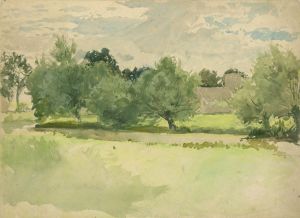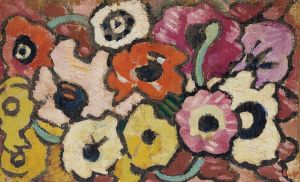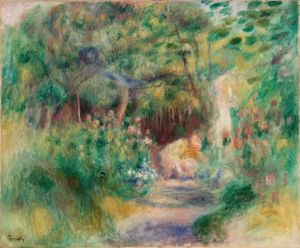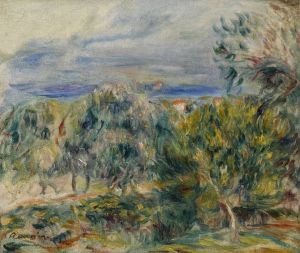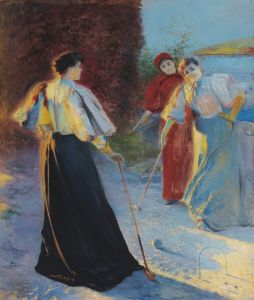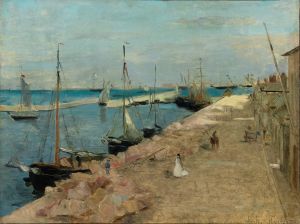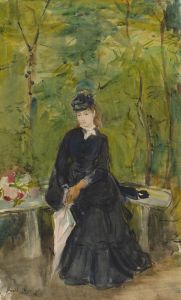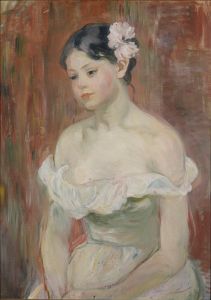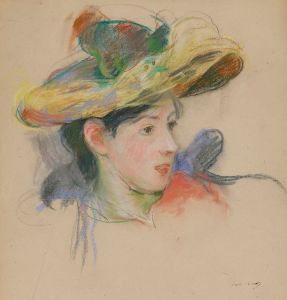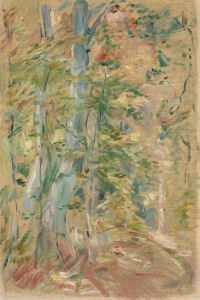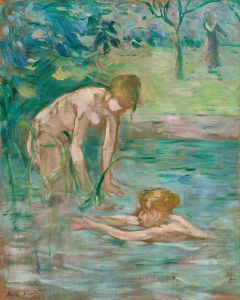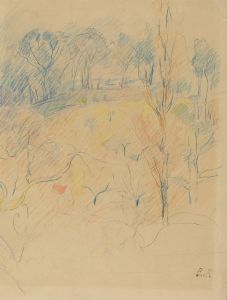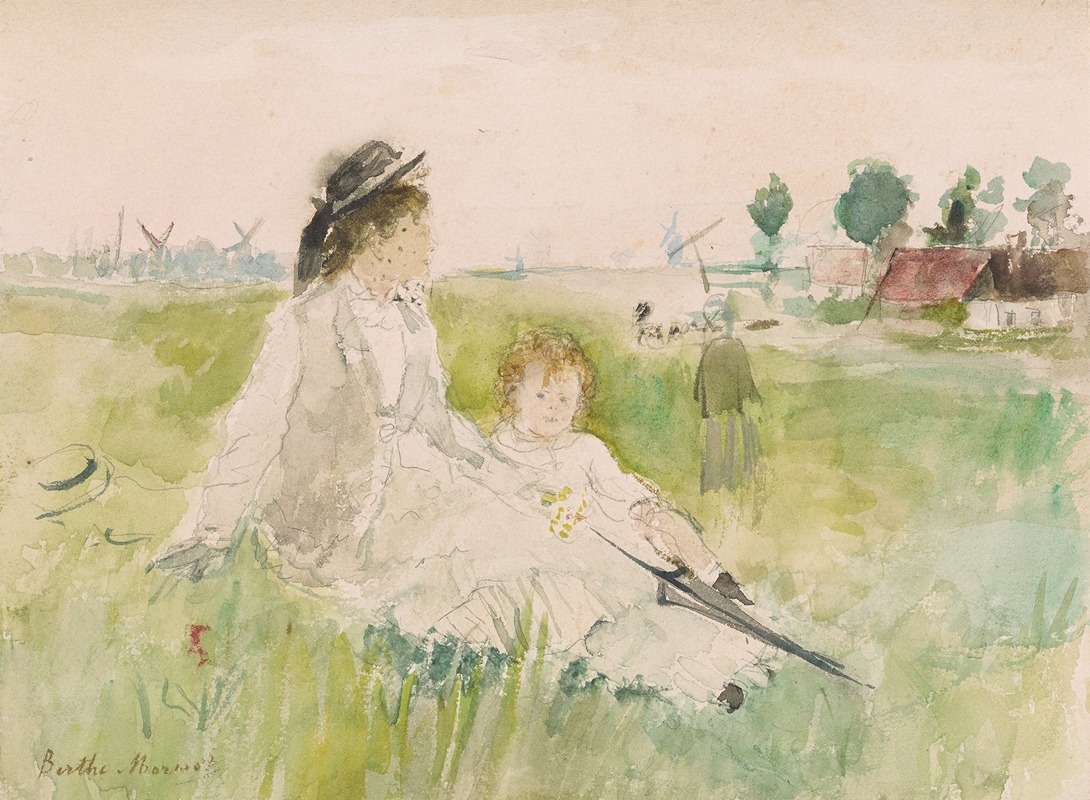
A Woman and Child Seated on the Grass
A hand-painted replica of Berthe Morisot’s masterpiece A Woman and Child Seated on the Grass, meticulously crafted by professional artists to capture the true essence of the original. Each piece is created with museum-quality canvas and rare mineral pigments, carefully painted by experienced artists with delicate brushstrokes and rich, layered colors to perfectly recreate the texture of the original artwork. Unlike machine-printed reproductions, this hand-painted version brings the painting to life, infused with the artist’s emotions and skill in every stroke. Whether for personal collection or home decoration, it instantly elevates the artistic atmosphere of any space.
Berthe Morisot's painting "A Woman and Child Seated on the Grass" is a notable work by the French Impressionist artist, who was one of the few prominent female painters associated with the Impressionist movement. Morisot was born on January 14, 1841, in Bourges, France, and she became an influential figure in the art world during the late 19th century. Her work is characterized by its lightness of touch, use of color, and focus on domestic life and intimate scenes.
"A Woman and Child Seated on the Grass" exemplifies Morisot's interest in capturing the everyday moments of women and children, a theme prevalent throughout her oeuvre. The painting depicts a serene scene of a woman and a child sitting on the grass, likely in a garden or park setting. The composition reflects Morisot's skill in portraying the subtleties of light and shadow, as well as her ability to convey the gentle interactions between her subjects.
Morisot's technique often involved loose brushwork and a soft palette, which can be seen in this painting. The use of light colors and fluid brushstrokes gives the work an airy, almost ethereal quality, typical of Impressionist art. This approach allows the viewer to focus on the mood and atmosphere of the scene rather than on precise details. The painting captures a moment of tranquility and connection, emphasizing the bond between the woman and the child.
As a member of the Impressionist circle, Morisot exhibited regularly with the group from their first exhibition in 1874. She was the only woman to exhibit in the first Impressionist exhibition and continued to participate in subsequent shows. Her work was well-received by her contemporaries, and she was respected by fellow artists such as Édouard Manet, who was also her brother-in-law, and Claude Monet.
Morisot's focus on domestic scenes and the lives of women was somewhat unconventional for the time, as the art world was predominantly male-dominated and often centered on grand historical or mythological subjects. Her choice to depict the private sphere and the everyday lives of women and children provided a unique perspective within the Impressionist movement.
The painting "A Woman and Child Seated on the Grass" is a testament to Morisot's ability to capture the essence of her subjects with sensitivity and grace. Her work continues to be celebrated for its contribution to the Impressionist movement and for challenging the traditional roles of women in art both as subjects and creators.
Berthe Morisot's legacy as a pioneering female artist endures, and her paintings remain an important part of art history, offering insight into the lives and experiences of women in the 19th century. Her work is housed in various museums and collections worldwide, where it continues to be appreciated by audiences for its beauty and emotional depth.





